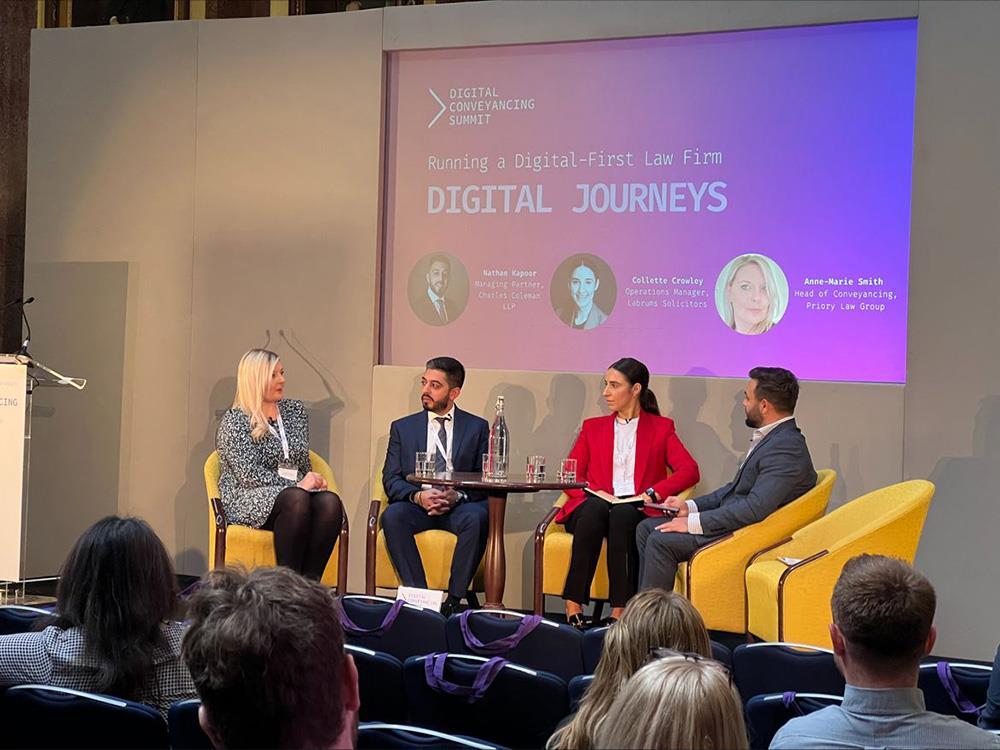Breaking down silos: why collaboration and unified KPIs are crucial in conveyancing and beyond
This article by Travis Scholes, Commercial Director at LMS, is part of our series further exploring key themes and topics that emerged at the Digital Conveyancing Summit 2023.
Looking back at the last 18 to 24 months we’ve seen a huge drive towards technology and collaboration in conveyancing. Law firms, brokers, and lenders have always strived to find the best possible solutions for their customers but the pressure on them to increase certainty and efficiency in the conveyancing journey has been enormous in the current economic environment.
Driving this efficiency with technology has traditionally been done in silo for various parts of the process. While it serves a purpose, digitalising each stage of the conveyancing journey with different technology is frustrating for all stakeholders as it does little to ease the administrative burden on them. We seem to have come a long way in addressing that this year as the industry is looking to drive innovation and development of technology that fixes these pain points.
That said, law firms are still reporting that the most time-consuming core activities they complete currently are administration and managing stakeholders in the process whether that’s dealing with phone calls, emails, or inbound queries. As such, if we’re measuring industry success on having reduced this burden in a bid to improve turnaround times, sadly it seems it’s actually getting worse, not better.
This is why it’s vital that the industry as a whole takes a step back to understand what the end goal is, how we’re going to get there, and how we’re going to measure and track progress. As an industry we need to ensure consistency in approach by working towards the same goals. Setting clear KPIs is vital.

Establishing key metrics
Getting to a place in which everyone is measuring success against the same factors means making sure that we’re all prioritising the same end goal. It’s clear that this is, and should continue to be, customer centricity. This is especially true with the implementation of the consumer duty this year.
As a result, turnaround times are clearly the current go-to metric, but we must also balance this with a need to deliver a level of certainty to the end borrower and maintain transparency throughout. These are the key drivers and the right balance between them will vary on a case-by-case basis. It can only be struck by ensuring the customer priority is established at the start. This necessitates all stakeholders singing from the same hymn sheet, with digitisation and tech adoption helping establish the level of communication required.
With 80% of all borrowers, whether in the purchase or remortgage market, now only acting on the advice of a broker, establishing a process whereby lenders and law firms get the answers they need quickly and in which brokers feel as though they are giving realistic updates to their clients is the key. If the front end of the process with brokers is tightened up, giving customers very clear instructions on what the next steps are at every turn and what data is needed from them, then we’d see fewer queries. As a result, there would be more time for all stakeholders to focus on resolving client concerns or issues to push the transaction through, rather than clarifying simple details. Not only would turnaround times fall, but having more certainty on the information they’ll receive, and when, will also allow lenders and law firms to give more accurate estimates for completion dates. It tackles both KPIs in one go, but it only works if we’re all aligned, setting a unanimous perspective on what good looks like.
Tech adoption
If those overarching goals are the same across the board, then it also makes tech adoption much easier. It’s a positive feedback loop – when we know what everyone thinks good looks like, we can work towards tech solutions that make that easier, and having those solutions will drive adoption among stakeholders who want to find the most efficient ways of hitting these KPIs. Everyone wins.
The good news is that the building blocks are already there. We already have some of the tech capabilities to deliver the solutions needed for all of us to work towards success together. Not only that, but all the stakeholders are already bought into the process – they want and need this to progress and are willing to work with each other to drive good customer outcomes, which is the main thing anyone cares about in the first place. With a new, universal approach to measurement, digitalisation would no longer be about implementing tech for the sake of it. It would truly be about solving problems for stakeholders and offering one end-to-end solution that links every step of the conveyancing journey. Now is the time to maximise this attitude, and to bring everything together for the sake of industry progress.
There’s no doubting the progress the industry has already made when it comes to tech implementation to drive efficiency and seamless conveyancing journeys. We’ve seen an extraordinary commitment and effort from all stakeholders to improve and maintain client service levels, despite the economic uncertainty and inflationary pressures we’ve seen this year. Now it’s time to take it up a notch, providing higher quality communication to clients at the front end of the process and measuring outcomes and success in the same way across the board. Only then will we move in the right direction - providing better outcomes for clients, while easing everyone’s workload in a tough time for both the remortgage and purchase markets.
Travis Scholes hosted a panel at the Digital Conveyancing Summit exploring whether speed or certainty was the enabler in the conveyancing process. You can catch up on-demand to see the full discussion.




